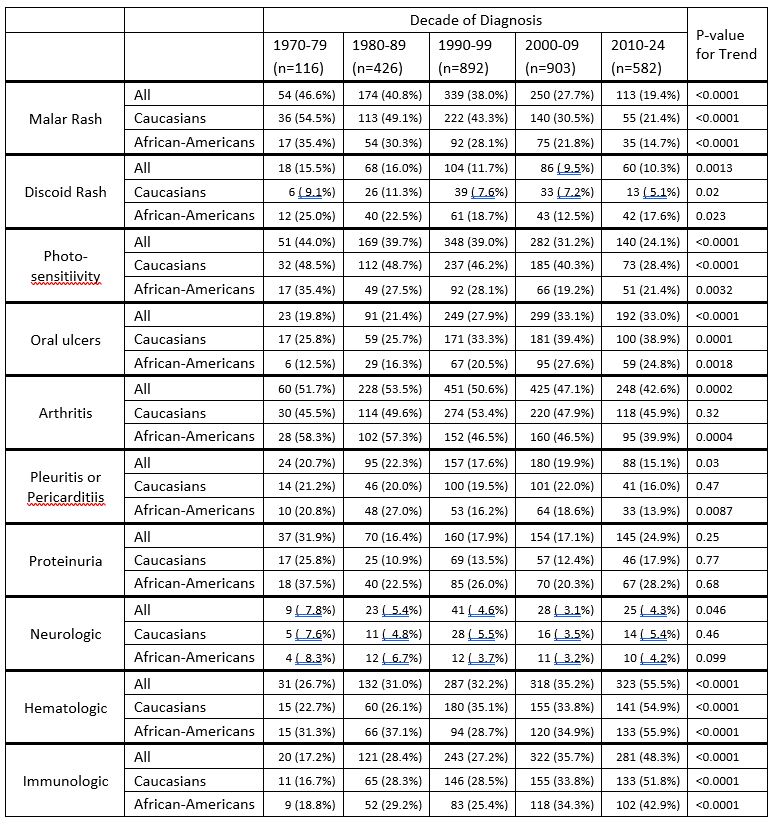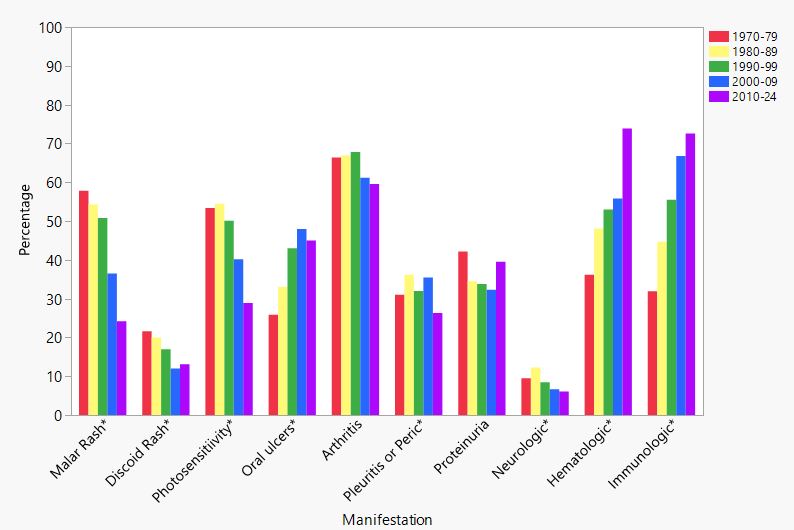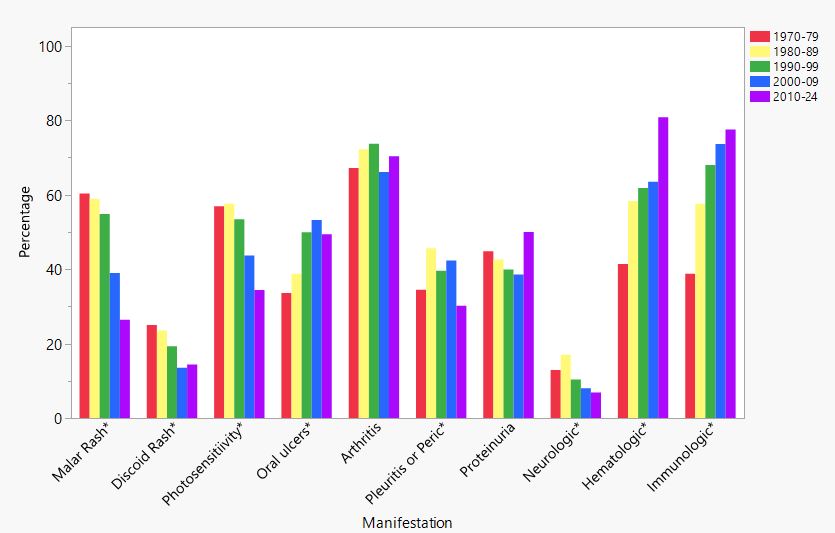Session Information
Session Type: Poster Session C
Session Time: 10:30AM-12:30PM
Background/Purpose: We investigated the changes in the prevalence of specific SLE manifestations over the last 50 years. In addition, we looked for differences between African-Americans and Caucasians.
Methods: he study was based on 2948 patients from a longitudinal SLE cohort for whom the date of SLE diagnosis was known Patients were divided into 5 cohorts (1970-79, 1980-89, 1990-99, 2000-09, 2010-2024) based on the decade of SLE diagnosis. The study incorporated all components of the 1997 ACR classification criteria for SLE (malar rash, discoid rash, photosensitivity, oral ulcers, arthritis, pleuritis or pericarditis, proteinuria, neurologic manifestations, hematologic manifestations, immunologic manifestations) to determine if there were changes over the decades in the prevalence of given manifestation at the time of SLE diagnosis (and up to 1 year after diagnosis) and within 5 and 10 years post diagnosis. The prevalence within 5 and 10 years after diagnosis was estimated using a Kaplan-Meier approach. The statistical significance of observed trends over the decades was based on Chi-squared tests for trendand Cox proportional hazards models.
Results: Table 1 shows the prevalence of various manifestations at the time of diagnosis over the decades. We observed no significant trend in the percentage with proteinuria. Cutaneous manifestations, however, significantly declined with the exception of oral ulcers, which increased. Arthritis declined. Serositis slightly declined. Neurologic manifestations slightly declined. Hematologic and immunologic manifestations increased. Figures 1 and 2 show the trends in prevalence of specific manifestations at 5 years after diagnosis and 10 years after diagnosis, respectively.
Conclusion: The prevalence of proteinuria at the time of SLE diagnosis has not changed over the decades. Prevalence of proteinuria also did not change at 5 years or 10 years after diagnosis. Thus, earlier introduction of hydroxychloroquine has not led to a reduction in lupus nephritis. Cutaneous manifestations (other than oral ulcers), decreased not just at 1 year, but also at 5 and 10 years after diagnosis. We hypothesize that this might reflect changes in behavior with less ultraviolet exposure. Surprisingly, both hematologic and immunologic manifestations have significantly increased. Hematologic manifestations are so objective that we feel this must be a real change in SLE. We have used the Crithidia anti-dsDNA assay, so cannot explain the increase based on the use of a more sensitive assay. We conclude that these changes are real and that the natural history and progression of SLE have changed.
To cite this abstract in AMA style:
Ugochukwu A, Goldman D, Fava A, Magder L, Petri M. The Natural History of SLE Has Changed Since the 1970s [abstract]. Arthritis Rheumatol. 2024; 76 (suppl 9). https://acrabstracts.org/abstract/the-natural-history-of-sle-has-changed-since-the-1970s/. Accessed .« Back to ACR Convergence 2024
ACR Meeting Abstracts - https://acrabstracts.org/abstract/the-natural-history-of-sle-has-changed-since-the-1970s/



